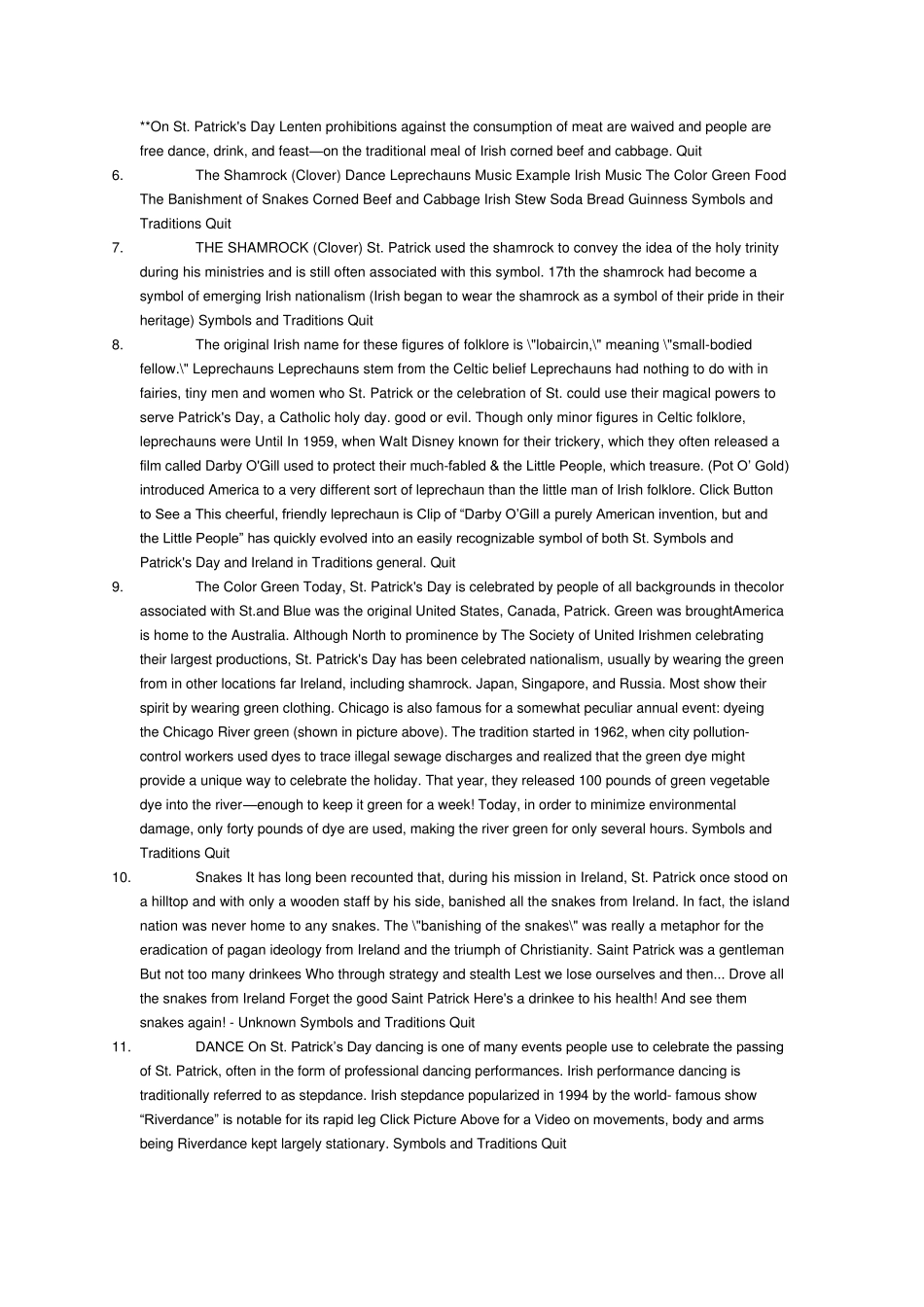Saint Patrick's Day (Irish: Lá Fhé ile Pá draig) is a religious holiday on the 17th of March. It is named after Saint Patrick (circa AD 387–461), the most commonly recognised of the patron saints of Ireland. It began as a purelyCatholic holiday and became an official feast day in the early 17th century. It has gradually become more of a secular celebration of Ireland's culture. It is a public holiday in the Republic of Ireland,[1] Northern Ireland,[2]Newfoundland and Labrador and in Montserrat. It is also widely celebrated by the Irish diaspora, especially in places such as Great Britain, Canada, theUnited States, Argentina, Australia, New Zealand, and Montserrat, among others. Slide 1: Dedicated to the Irish & Irish at Heart all around the World St. Patrick's Day The History of St. Patrick's Day : St. Patrick's Day is a yearly holiday celebrated on 17 March by the Irish and Irish at Heart in big cities and small towns alike with parades, "wearing of the green," music and songs, Irish food and drink, and activities for kids such as crafts, coloring and games. It’s a time for f un. The event is named after Saint Patrick, the most commonly recognized of the patron saints of Ireland. The History of St. Patrick's Day Who Was Saint Patrick? : Who Was Saint Patrick? The factual information about Saint Patrick’s life and times is qu ite vague. He was born in Roman Britain in the fifth century, into a wealthy Romano-British family. Saint Patrick’s father was a deacon in the Church. At the age of sixteen he was kidnapped by Irish raiders and taken captive to Ireland as a slave. After six years of slavery he escaped to the Irish coast and fled home to Britain. Upon returning, h...


